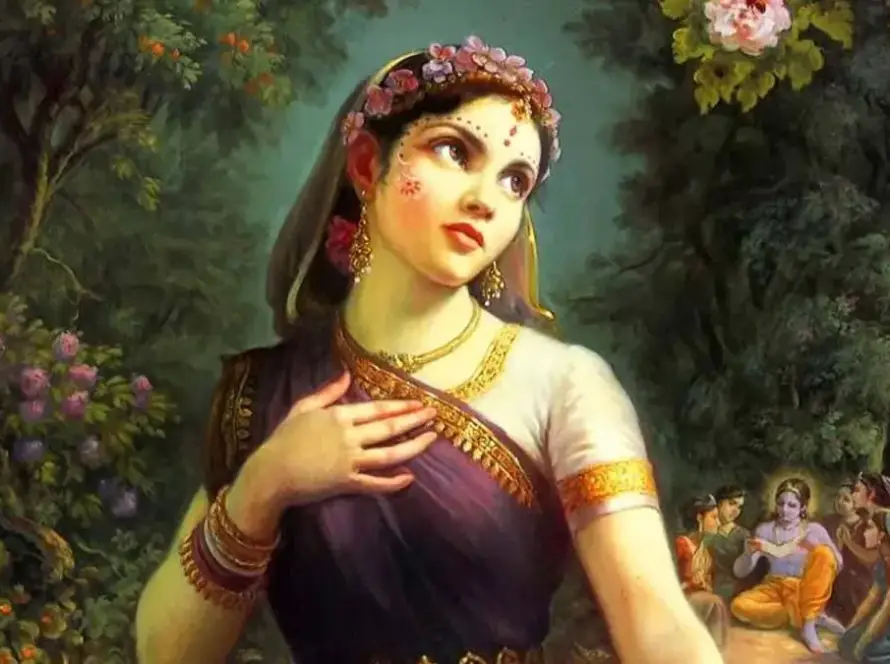Approaching the Divine Mystery of Parakiya-Rasa: A Gaudiya Vaishnava Perspective
In the Gaudiya Vaishnava tradition, one of the most revered and yet most misunderstood aspects of devotion is the worship of Radha and Krishna in Parakiya-rasa — the transcendental mood where Radha and Krishna meet as lovers, not bound by the institution of marriage. While this may appear morally questionable from a material perspective, the tradition venerates these pastimes as the highest expression of divine love. This article explores how to approach this exalted subject with the appropriate mindset and philosophical foundation.
Parakiya vs. Svakiya: The Apparent Moral Paradox
In worldly terms, svakiya (love within marriage) is seen as moral and parakiya (love outside marriage) as immoral. How, then, can spiritual practitioners, especially renunciants and monks, venerate a relationship that defies conventional morality? This paradox causes confusion or even repulsion in some, while others may become overly fascinated and distort the purity of these pastimes by superimposing mundane romanticism.
Both extremes are dangerous. The moralist rejects the divine due to his conditioned lens, while the sentimentalist degrades the sacred into profane. True access to this mystery lies beyond both — in a heart that is humble, purified, and prayerfully surrendered.
The Correct Entry Point: Humility and Qualification
Understanding Parakiya-rasa requires a deeply reverential approach. The first step is humility. Just as Chanakya kept the doorway to his hut low so visitors had to bow, Krishna consciousness demands we bow our ego at the door. Only then can we begin to understand divine love.
Even Srila Prabhupada once said he was not qualified to speak on rasa-lila. This is not an admission of inadequacy but a lesson in approach. We must never think we can “figure it out” intellectually and then surrender. Rather, surrender is the prerequisite to understanding.
Foundational Preparation: From Karela to Kṛpā
Before we can taste the sweetness of Radha-Krishna’s pastimes, we must first endure the “karela” — the bitter medicine of understanding our conditioned nature. The Srimad-Bhagavatam, through the strong words of Sukadeva Gosvami and Srila Prabhupada’s commentaries, repeatedly exposes our bodily consciousness and urges us toward purification.
This prepares the heart for true sweetness. When we understand we are not this body, that our so-called moral constructs are products of temporary designations, and that our real identity is as eternal servants of Krishna, we begin to develop the right consciousness to approach madhurya-rasa.
The Drama Analogy: Divine Separation and Longing
Imagine a husband and wife who are actors in a play. On stage, the wife is portrayed as someone else’s spouse, but still longs to be with her real husband. Their emotions are intensified in this dramatic separation, and both the actors and the audience feel deeper love and empathy.
Similarly, Radha and Krishna enact their divine Parakiya pastimes to awaken intense hankering in the hearts of devotees. This isn’t about romantic escapism; it is a sacred drama designed to stimulate vipralambha-bhava — loving separation. Krishna performs these pastimes to attract conditioned souls and intensify their longing for Him.
Role of the Acharyas: Renunciation and Rasa
It is no coincidence that the greatest relisher of these pastimes, Sri Chaitanya Mahaprabhu, was a sannyasi. The Six Goswamis of Vrindavan, Sukadeva Gosvami, and other exalted acharyas were renounced souls who never indulged in mundane pleasures. Yet, they worshiped these very pastimes with awe and reverence.
Their example teaches us that Parakiya-rasa is not a license for sense enjoyment but a revelation of the soul’s deepest capacity to love Krishna beyond all boundaries.
Practical Application for Sadhakas
As aspiring devotees, our primary goal is to increase attachment to Krishna. Whether that comes through hearing about His childhood, friendships, or His loving exchanges with the gopis depends on our individual constitution and level of advancement.
We may choose to primarily hear other lilas, and that is perfectly valid. Yet, we should always acknowledge that the madhurya pastimes are supreme, even if we are not ready to relish them fully.
Therefore, we approach these topics not as entertainment, nor out of curiosity, but as an offering of worship. And worship has a three-fold foundation of: humility, openness to hear fundamental truths, and prayerful mood of surrender.
Only then, we can gradually and safely enter into the understanding of the highest truth of love of Srimati Radha Rani and Krishna.
Conclusion: Loving Longing for the Supreme Beloved
Krishna’s pastimes are all absolute. Whether we meditate on His butter stealing, demon slaying, or secret meetings with the gopis, the benefit lies in the sincerity of our devotion.
Parakiya-rasa is not a contradiction to morality; it is a transcendental expression that shatters material concepts and awakens divine longing. The mystery becomes revelation only to those who are willing to bow their heads, purify their hearts, and pray for the ability to love Krishna beyond the limits of logic, law, and even dharma.
Let us approach these pastimes not as scholars or critics, but as humble servants longing to be with our eternal beloved Lord Sri Krishna.
To be continued….



